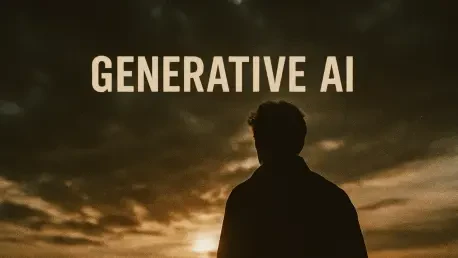Generative AI has emerged as a revolutionary force in artificial intelligence, boasting transformative potential across myriad industries. This cutting-edge technology represents a remarkable leap forward, enabling machines to produce novel outputs ranging from text and code to intricate designs and innovative products. Central to this evolution are generative AI engineers, who blend expertise from data science, machine learning, and artistic domains to craft sophisticated algorithms. As businesses and industries increasingly seek automation and innovation, the role of these engineers has become indispensable.
Analyzing Generative AI’s Evolution
Generative AI operates on core principles that harness vast datasets, allowing machine learning algorithms to recognize patterns and generate unprecedented solutions. Its emergence symbolizes a crucial shift in the artificial intelligence landscape, fundamentally altering how technology interacts with the world. Generative AI’s transformative influence is palpable across various sectors, from healthcare and finance to entertainment and education. The comprehensive exploration of its evolution reveals why it stands at the intersection of art and engineering, driving modern innovation.
Dissecting the Building Blocks of Generative AI
Machine Learning Engine and Data Dynamics
At the heart of generative AI lies the potent application of machine learning and data processing techniques. These elements form the groundwork that enables machines to learn from extensive datasets and generate novel ideas or solutions. The process involves intricate feature extraction, model training, and iterative improvement to achieve enhanced functionality and performance. Robust data handling and machine learning algorithms are indispensable, establishing a framework upon which these generative systems thrive.
Creative Algorithmic Design: The Art of AI
Generative AI not only leverages computational prowess but also navigates the realms of creativity through algorithmic design. By meticulously designing algorithms to simulate creativity, engineers empower AI systems to bring forth innovation that mimics human originality. This creative endeavor extends beyond technical intricacies to encompass real-world applications, evidencing generative AI’s versatility. From generating compelling narratives to crafting intricate artworks, the artistic infusion in AI design demonstrates its expansive potential.
Emerging Paradigms: Trend Alerts in Generative AI
Recent advancements in generative AI have witnessed emerging trends and significant innovations poised to redefine industry behaviors. New methodologies and technologies are continually reshaping generative AI’s trajectory, revealing promising directions for future exploration. These developments include improved algorithmic efficiencies, enhanced data synthesis capabilities, and novel applications across diverse settings. Technological augmentation and collaborative innovation are shaping a landscape vibrant with possibilities.
Generative AI’s Practical Implications
Generative AI’s real-world applications span a broad spectrum, offering compelling use cases and tangible benefits across industries. In healthcare, AI models assist in designing drug compounds, aiding diagnostic processes, and enhancing medical research. Similarly, in finance, generative systems create robust financial reports and perform intricate risk assessments, bolstering decision-making capabilities. Other sectors, such as retail and entertainment, witness innovative applications that redefine customer engagement and creative processes.
Roadblocks and Constraints in Generative AI
Despite significant advancements, generative AI grapples with formidable challenges that hinder its broad-scale adoption. Technical hurdles, such as scalability and integration issues, alongside stringent regulatory landscapes, create barriers for seamless implementation. Moreover, ethical concerns around bias and data privacy necessitate ongoing dialogue to foster responsible AI development. Addressing these constraints is vital for generative AI to unleash its full potential and deliver inclusive, ethical solutions.
Anticipated Advancements in Generative AI
The future of generative AI appears promising, with potential breakthroughs and exciting directions on the horizon. Continued research and development efforts are likely to yield innovations that reshape societal and industrial paradigms fundamentally. Enhanced computational capabilities, more sophisticated algorithms, and ethical considerations will guide generative AI’s trajectory. As industry stakeholders collaborate to navigate new challenges, these advancements could revolutionize processes, products, and services.
Summative Reflection and Key Insights
The review of generative AI presented numerous insights into its pivotal role in shaping technological advancements. Generative AI engineers exemplify the power of interdisciplinary collaboration, merging creativity and science to foster innovation. As industries continue to embrace this transformative technology, they gain opportunities to drive efficiency and creativity while navigating evolving ethical and regulatory landscapes. The future holds immense promise for generative AI, heralding a new era of technology-driven possibilities and growth.









